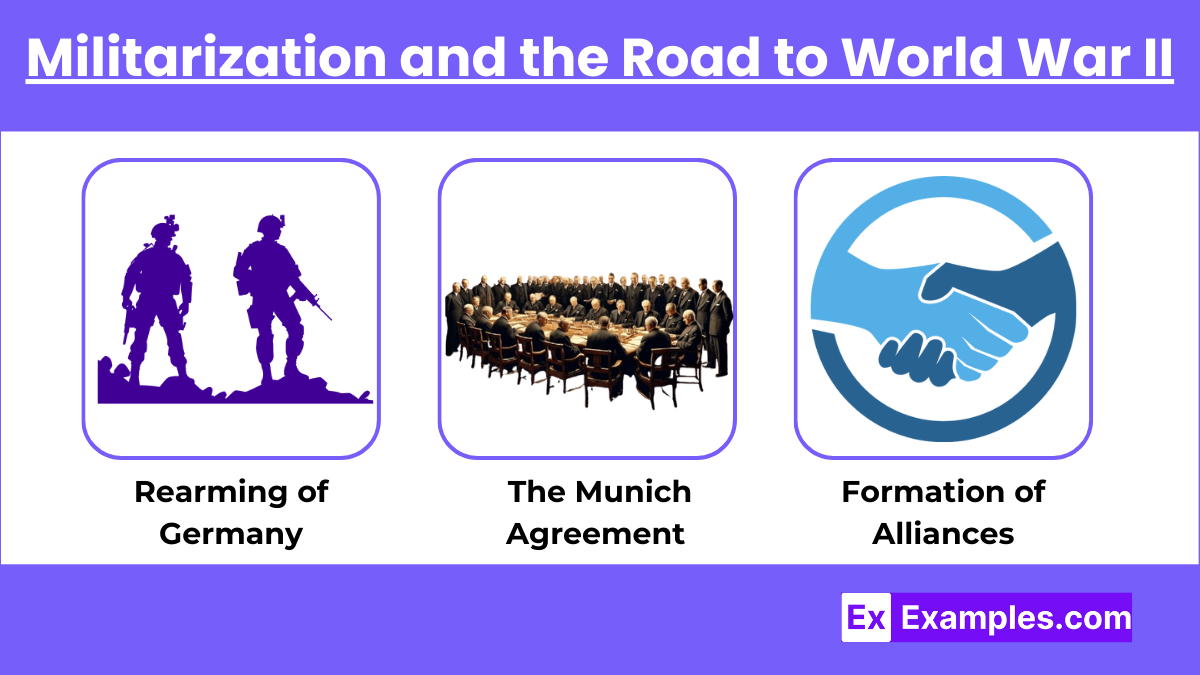The Interwar Period (1919-1939) was a transformative era between World War I and World War II, marked by political upheaval, economic crises, and the rise of totalitarian regimes. It witnessed the Treaty of Versailles, the Great Depression, and the emergence of fascism, communism, and militarism, setting the stage for growing tensions and conflicts that eventually led to World War II.
Free AP World History: Modern Practice Test
Learning Objective
In studying "The Interwar Period" for AP World History: Modern, you should learn to identify the political, economic, and social changes that emerged after World War I, analyze the rise of totalitarian regimes, and evaluate the factors that led to World War II.
1. Overview of the Interwar Period (1919-1939)
The Interwar Period was a time between World War I and World War II, marked by significant political, economic, and social changes.
It began with the signing of the Treaty of Versailles in 1919 and ended with the start of World War II in 1939.
This era saw the rise of totalitarian regimes, economic instability, and growing tensions that eventually led to the outbreak of World War II.
2. The Great Depression (1929)
Economic Impact: The 1929 Wall Street Crash led to a worldwide economic depression, causing mass unemployment, poverty, and a decline in industrial production.
Political Effects: The economic hardships of the Great Depression contributed to the rise of extremist ideologies, including fascism in Italy and Nazism in Germany, as people sought solutions to economic woes.
Global Impact: Countries resorted to protectionism, leading to a further decline in international trade and worsening global economic conditions.
3. International Conflicts and Tensions
International conflicts and tensions arise from territorial disputes, ideological differences, and power struggles, often leading to wars, diplomatic standoffs, and global instability, requiring international cooperation for resolution and peacebuilding.
Japanese Expansion: Japan sought to expand its empire due to a lack of natural resources, leading to the invasion of Manchuria in 1931 and other aggressive actions in East Asia.
Spanish Civil War (1936-1939): A conflict between the Republicans and Nationalists in Spain, which became a battleground for competing ideologies (fascism vs. socialism/communism). The Nationalists, led by Francisco Franco, eventually won.
Appeasement Policy: European powers, particularly Britain and France, adopted appeasement toward aggressive actions by Germany and Italy, hoping to avoid another war. This only emboldened fascist leaders.
4. Militarization and the Road to World War II
Rearming of Germany: Despite restrictions, Hitler rebuilt Germany's military, occupying the Rhineland in 1936 and annexing Austria in 1938 (Anschluss).
The Munich Agreement (1938): Britain and France allowed Germany to annex the Sudetenland (part of Czechoslovakia) in a failed attempt to maintain peace, symbolizing the failure of appeasement.
Formation of Alliances: The Axis Powers—Germany, Italy, and Japan—formed alliances, while the Soviet Union signed the Nazi-Soviet Pact with Germany, agreeing to divide Eastern Europe.
5. Cultural and Social Changes
The Roaring Twenties: This period saw cultural flourishing, especially in Western countries, with jazz music, cinema, and modernist literature, but also societal shifts such as changing gender roles.
Women’s Suffrage: Many countries, including the United States and Britain, granted women the right to vote, reflecting broader social changes.
Art and Literature: The interwar period produced notable works of literature and art, reflecting the disillusionment and experimentation of the time (e.g., the Lost Generation writers, surrealist art).
Examples
Example 1: The Great Depression (1929)
A severe global economic downturn caused widespread unemployment and poverty, leading to political instability and the rise of extremist ideologies like fascism and Nazism.
Example 2: Rise of Fascism in Italy
Benito Mussolini established a fascist dictatorship in 1922, promising national glory and economic stability, which influenced other countries toward totalitarianism, especially during economic hardship.
Example 3: Nazi Germany's Expansion
Adolf Hitler violated the Treaty of Versailles by rebuilding Germany's military and annexing Austria in 1938, demonstrating aggressive nationalism and contributing to the road toward World War II.
Example 4: Japanese Invasion of Manchuria (1931)
Japan invaded Manchuria to expand its empire, seeking resources and territory, which marked the start of aggressive militaristic actions in East Asia.
Example 5: Spanish Civil War (1936-1939)
A conflict between Republicans and Nationalists in Spain, which became a testing ground for fascist and communist ideologies, ultimately resulting in Francisco Franco's fascist dictatorship.
MCQs
Question 1
Which event significantly contributed to the rise of totalitarian regimes during the Interwar Period?
A) The Spanish-American War
B) The Great Depression
C) The Renaissance
D) The Industrial Revolution
Answer: (B) The Great Depression
Explanation:
The Great Depression caused widespread economic hardship, unemployment, and instability, leading people to support totalitarian leaders like Hitler and Mussolini, who promised solutions to the crisis.
Question 2
Which treaty's terms created economic and political instability in Germany during the Interwar Period?
A) Treaty of Tordesillas
B) Treaty of Paris
C) Treaty of Versailles
D) Treaty of Ghent
Answer: (C) Treaty of Versailles
Explanation:
The Treaty of Versailles imposed heavy reparations, territorial losses, and military restrictions on Germany, causing economic hardship and political unrest, ultimately fueling the rise of Nazism.
Question 3
Which event marked the beginning of Japanese aggression in East Asia during the Interwar Period?
A) Invasion of Korea
B) Attack on Pearl Harbor
C) Invasion of Manchuria
D) Bombing of Hiroshima
Answer: (C) Invasion of Manchuria
Explanation:
In 1931, Japan invaded Manchuria to gain resources and territory, signaling the start of its aggressive expansion in East Asia, contributing to rising tensions before World War II.







